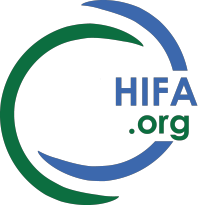Dear Suren and all,
You wrote: "I am writing to kindly follow up on the commentary I submitted on 17 November titled “Invisible Barriers: Informal Costs, Staffing, and Quality in Maternal Care.” I wanted to check whether it was received and if any further information is required from my side for consideration or publication on the HIFA platform"
On reviewing this, I note you have shared two articles with us recently.
The first is titled 'When Guidelines Don’t Fit: The Hidden Cost of Copy-Paste Medicine in Low-Resource Hospitals' and is available here:
https://www.globalhealthunfiltered.com/blog/when-guidelines-dont-fit-the...
Your opening paragraph is powerful: 'Clinical guidelines are meant to save lives. They distill evidence, standardize care, and protect patients from the dangers of guesswork. However, in low-resource hospitals, global and national guidelines often become something else entirely — a bureaucratic exercise rather than a clinical tool. When protocols designed for well-resourced environments are copied into wards that lack staff, equipment, or essential drugs, the result is not safety but paralysis.'
Indeed the whole article is compelling and I invite all HIFA members to read it.
You say: “The next generation of global guidelines should begin not in conference rooms, but in the wards where scarcity defines every decision.”
COMMENT (NPW): You have identified a major issue in knowledge translation: guidelines that are not applicable to their context. This is clearly a failure in the global evidence ecosystem. The theoretical basis is that an organisation such as WHO uses a rigorous process to develop an international guideline on a particular health issue. This process typically involves one or more systematic reviews so that the evidence can be assessed cumulatively. The resulting guideline is then made freely available to all member states. Typically, each member state is responsible for adapting a national version of the guideline (or integrating the new evidence into its current national guidance) that takes into account the national context so that the guideline aligns with situational reality. It sounds like this is not happening reliably in Cambodia? I would be interested to hear more from you, and from other HIFA members in LMICs.
This leaaves the question: what is going well (or not well) in this process? Is the problem largely around the capacity of national MoHs? I would say that the work of integrating international guidance with national context is exceptionally challenging. What could be done to facilitate the process? Is there room for more cooperation and coordination between international guideline developers and MoHs? Is there perhaps a simple stepwise process that could be followed? Is this an area where AI could contribute?
I'm also aware that within each country there is a wide range of resources at different levels of care (primary, secondary, tertiary) and between the private and public sectors. Therefore there are different levels of guidance needed for different contexts. Can anyone on HIFA describe how this works (or doesn't work) in their country?
Your second article 'Invisible Barriers: Informal Costs, Staffing, and Quality in Maternal Care'
https://www.globalhealthunfiltered.com/blog/invisible-barriers-informal-...
You write about the enormous pressures and stress of health work in LMICs: 'I have observed midwives working long shifts without breaks because there is no one to relieve them. I have seen families purchase gloves, gauze, or essential medications from local pharmacies when hospital supplies run short. These are not isolated events. They are part of a complex, often unspoken system that enables care to continue despite resource limitations.'
You say there is a need to recognise and honour 'the daily efforts, sacrifices, and resilience that keep fragile health systems alive'. The basis for HIFA is that health workers have a range of basic needs that must be met to empower them to deliver care. One of these is reliable healthcare information - and not just reliable, but relevant to their context as you described in your first article. Some of us have also argued for the current paradigm of 'patient centred care' to be expanded to 'patient and health worker centred care', so that the needs of health workers are given as much priority as those of patients. My own view is that health systems should indeed be *much* more oriented to meet the basic needs of health workers.
Best wishes, Neil
HIFA profile: Neil Pakenham-Walsh is coordinator of HIFA (Healthcare Information For All), a global health community that brings all stakeholders together around the shared goal of universal access to reliable healthcare information. HIFA has 20,000 members in 180 countries, interacting in four languages and representing all parts of the global evidence ecosystem. HIFA is administered by Global Healthcare Information Network, a UK-based nonprofit in official relations with the World Health Organization. Email: neil@hifa.org

